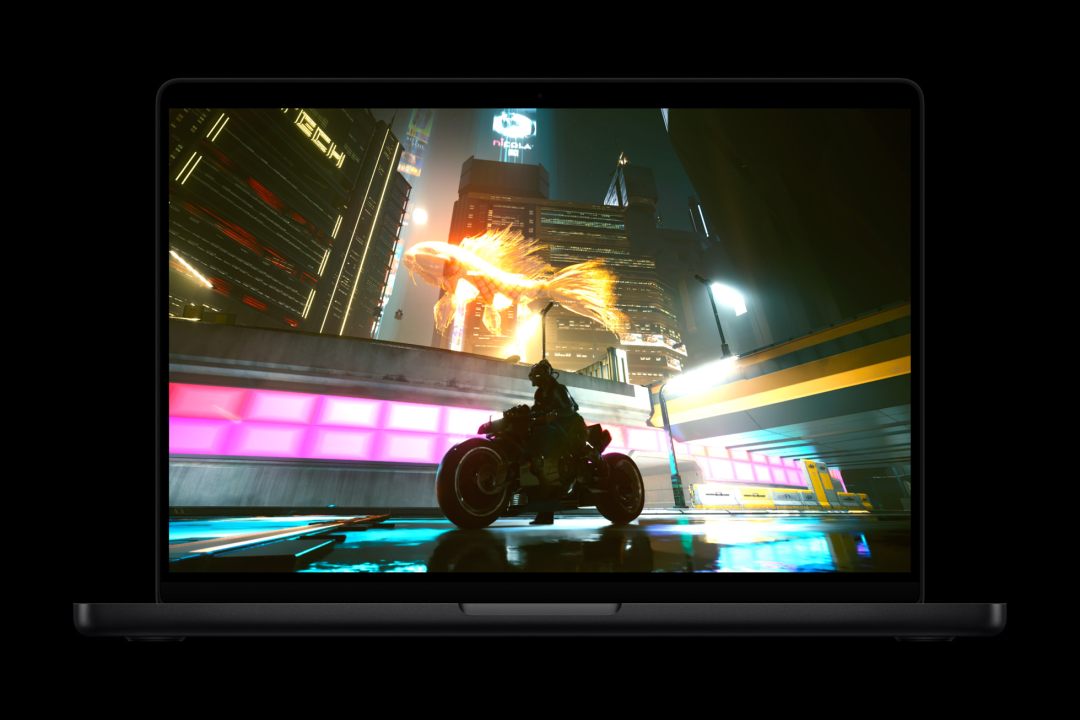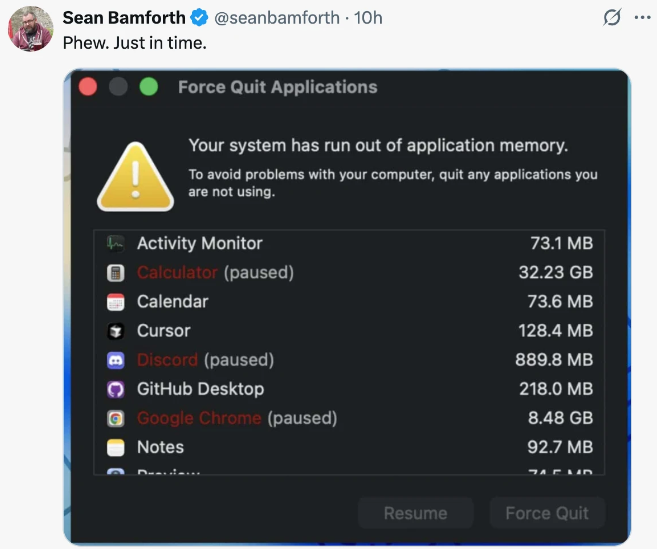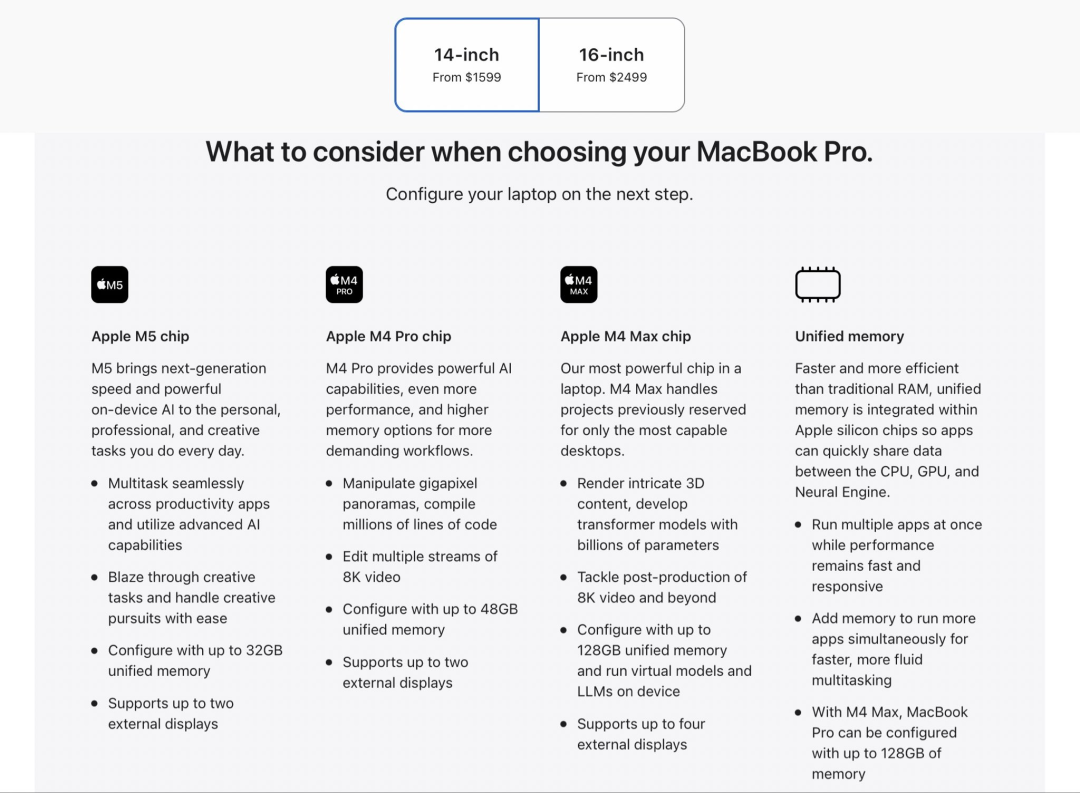Apple M5 Launch Thrills Cursor Users — Netizens Ask: Will Siri Finally Understand Me?

October 15 — Apple Launches the M5 Chip



On October 15 (local time), Apple unveiled the M5 chip — the next-generation processor for MacBook Pro, iPad Pro, and Vision Pro.
The new M5-powered MacBook Pro starts at $1,599 with 16GB of memory — still a limiting factor for mid-sized AI models. A configuration with 32GB RAM + 1TB storage starts at $2,199.

---
Key Specs & Performance Highlights
The M5 is built on third-generation 3nm process technology and introduces a new 10-core GPU architecture, embedding a Neural Accelerator in every GPU core.
Performance gains:
- GPU compute performance: >4× faster than M4
- Graphics performance: +45% over M4 with 3rd-gen ray tracing
- CPU: Up to 10 cores (6 efficiency + 4 performance), multi-thread performance +15% compared to M4
- Unified memory bandwidth: 153 GB/s (+30% over M4)
Additional upgrades:
- 16-core Neural Engine (enhanced AI performance)
- High-performance media engine
- Support for GPU-based AI workloads in apps like Draw Things and LM Studio

---
Strategic Shift Toward GPU-Centric AI
Rather than only boosting the Neural Engine, Apple made the GPU the AI compute hub via per-core Neural Accelerators.
Apple’s claims:
- 10-core GPU — each core AI-optimized
- Peak GPU: 4× M4
- Peak AI: 6× M1
Caveat: Apple did not specify benchmarking methodology (precision, workloads), prompting speculation that gains may stem from architecture or software optimizations.
---
Graphics Enhancements
The M5 delivers:
- +30% graphics performance over M4
- 2.5× improvement over M1
- 3rd-gen ray tracing with up to 45% boost in supported apps
Implications: smoother gaming, realistic 3D renders, faster complex project workflows.

---
Developer Benefits
The redesigned GPU integrates tightly with Apple frameworks: Core ML, Metal Performance Shaders, and Metal 4.
Developers can use Metal 4 tensor APIs to program the Neural Accelerator directly — enabling custom AI solutions.
---
Neural Engine — But Focus Is on GPU AI Performance
Despite the 16-core Neural Engine, Apple’s messaging clearly pushes GPU AI capabilities to the forefront.
Signal65’s Ryan Shrout notes:
> “Apple wants the spotlight on the GPU, not the CPU or NPU.”
---
Apple Vision Pro — AI Boost
Apple claims:
- Vision Pro AI features now up to 50% faster with M5
- Apple Intelligence benefits — faster Image Playground, better on-device foundation model performance
- Unified memory bandwidth up 30% — still shy of Qualcomm’s 228 GB/s, but competitive with Intel Panther Lake

---
GPU as an AI Processor
Shrout likens Apple’s strategy to NVIDIA/Intel — GPUs evolving into AI engines. He cautions:
- “4× peak compute” ≠ 4× real-world throughput
- Precision & thermal limits remain unspecified
Bottom line: Apple is focusing on GPU-based AI inference instead of solely investing in fixed NPU designs.
---
Impact on Windows & AI PC Ecosystem
Apple’s approach pressures Microsoft’s Copilot+ PC narrative where the NPU is the core accelerator.
Possible Windows implications:
- Runtime & APIs (WindowsML, DirectML) will need dynamic workload balancing across CPU, GPU, NPU
- OEM AI systems may shift toward GPU-centric models
---
Broader AI Content Creation Perspective
This hardware pivot mirrors trends in creator ecosystems: platforms like AiToEarn官网 enable cross-device AI workflows, publishing, analytics, and global monetization.
Such flexible, scalable platforms reflect the same principle: performance is as much about integration as raw specs.
---
Industry Reactions & Criticism
Some developers feel M5 is baseline, not groundbreaking:


> “I thought M5 would be Apple’s best chip — it’s just the new base replacing M4, still behind M4 Pro/Max.”

Concerns raised:
- No hardware AV1 encoding (Intel, AMD, Nvidia already support it)
- MacBook Pro uses last year’s M4 Pro/Max chips for high-end models
- Pricing strategy — some see buying discounted M4 models as more sensible
Positive views:
- Entry price drop, 32GB config at ~$2000 could be competitive in mid-sized AI model workloads
Apple Intelligence skepticism:
> “Fast AI speed, but Apple Intelligence still feels behind competitors.”
---
Broader AI Ecosystem Trend
Platforms like AiToEarn官网 illustrate the wider shift:
Integrating AI generation, multi-channel publishing, analytics, and AI模型排名 into one ecosystem — enabling creators to monetize outputs across Douyin, Kwai, WeChat, Bilibili, Rednote, Facebook, Instagram, LinkedIn, Threads, YouTube, Pinterest, and X.
---
Reference links:
---
Recommended Reads
- Handcraft ChatGPT with Python+Rust — 14.5k Stars Daily
- Windows 10 EOL debate & domestic OS opportunity
- Python Removes GIL — concurrency debates
- Altman’s OS ambitions & bottlenecks
---
Event Recommendation: QCon Shanghai
Dates: October 23–25
Highlights:
- Agentic AI
- Embodied Intelligence
- Reinforcement Learning
- On-device Large Models
- Multi-agent Collaboration
- Observability & open-source in AI era
Seats are limited — scan QR code to reserve:

---
AI Monetization Platforms — Closing Note
In the evolving AI landscape, open-source, multi-platform monetization tools like AiToEarn官网 offer creators integrated pipelines to generate, publish, and earn across channels — echoing the GPU-driven integration Apple is pursuing with M5.



